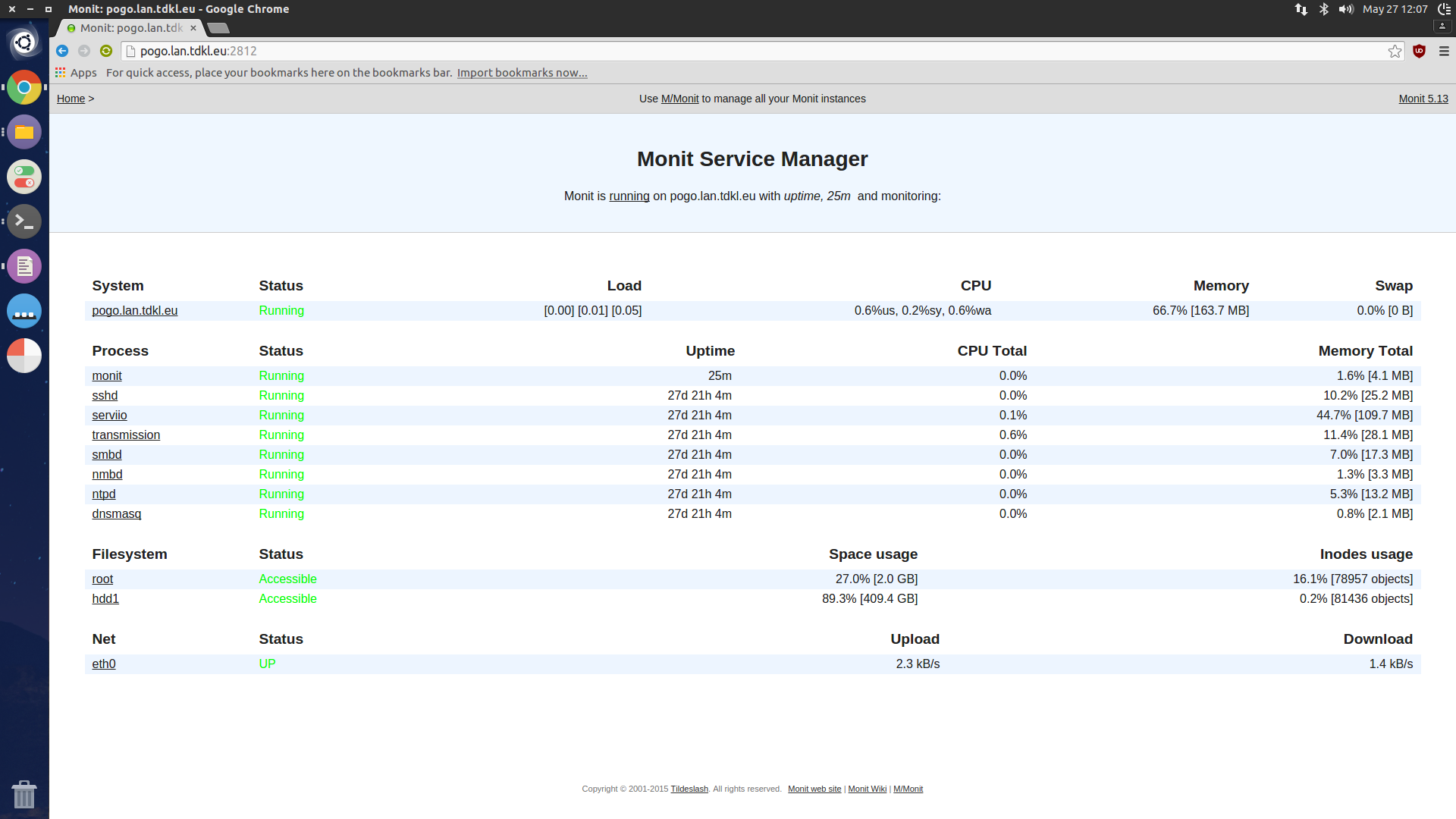
- #Monit system monitoring how to#
- #Monit system monitoring update#
- #Monit system monitoring password#
- #Monit system monitoring professional#
If you liked this post please share it with your friends on the social networks using the buttons on the left or simply leave a reply below.
#Monit system monitoring how to#
You might also want to read our guide on How to install Monitorix system monitoring tool on CentOS 6 VPS. Our admins will set this up for you immediately. Of course, if you are one of our Linux VPS Hosting customers, you don’t have to do any of this, simply ask our admins, sit back and relax. We have successfully installed and configured Monit on our CentOS VPS. Open your browser to and enter the credentials you created in /etc/nf If failed port 22 protocol ssh then restartĪfter creating the desired configuration files, test the control file for syntax errors: If failed host 127.0.0.1 port 123 type udp then alert If failed host 0.0.0.0 port 80 then restartĬheck process ntpd with pidfile /var/run/ntpd.pid Start program = “/etc/init.d/httpd start” Use your favorite text editor and create the files as shown for these couple of example service configurations:Ĭheck process webserver with pidfile /var/run/httpd/httpd.pid To do this, we will create separate files for every service located within the /etc/monit.d/ directory. # allow readonly # allow users of group ‘users’ to connect readonlyĪfter the initial config is completed, we can configure some of the services we want to monitor. # allow # allow users of group ‘monit’ to connect (rw)
#Monit system monitoring password#
# allow localhost # allow localhost to connect to the server andĪllow user:’password’ # require user ‘user’ with password ‘password’ # use address localhost # only accept connection from localhost default is 2812 (if setting custom port, make sure it does not overlap with some other service’s listening port) Set httpd port 2812 and # set the listening port to your desire. So, to download and install the latest Monit version on your server follow the next few simple steps:Īfter the installation is complete, edit the main config file to resemble the example below using your favorite text editor and set your own username and password: This can also be achieved via the EPEL repository but you won’t get the latest version which will create additional configuation and usage difficulties for you. Now we can download and install Monit on the server. # yum install -y libcrypto.so.6 libssl.so.6 Run the following:īefore installing Monit, we need to install some of the files required by it. You can assign Monit multiple tasks (not only monitoring), so if a certain service fails the check, Monit can alert or do something about it (try to restart the service for example).įirst, we need to make sure our server is up-to-date. The monitoring can be directly on the command line or on the web. Monit is a monitoring and managing as well as an automatic maintenance tool. To monitor the MySQL service, sudo nano /etc/monit/conf.Today we’ll show you how to install Monit on your Centos VPS. allow ipaddress/32 Monitoring MySQL and Apache services If you need to check the web interface remotely, comment out the localhost line and add the following instead.

Use address localhost # only accept connection from localhostĪllow admin:monit # required user credential Then, to enable and change the web interface settings, uncomment or change the following lines.

sudo nano /etc/monit/monitrcįirst, change the default monitoring interval if needed. No matter whether you use a smartphone or computer, Solar.web offers you an array of functions.
#Monit system monitoring professional#
The default port is on 2812 but you can change that by modifying the configuration file. The professional PV system monitoring tool Fronius Solar.web supplies you with the latest system data at all times. The nice thing about Monit is that it comes with a web interface for monitoring and managing the configured services. To verify the version after the installation, sudo monit -V Configure the web service Then, install Monit from the Ubuntu repository.
#Monit system monitoring update#
As always, update the system first to keep the system update-to-date first.


 0 kommentar(er)
0 kommentar(er)
